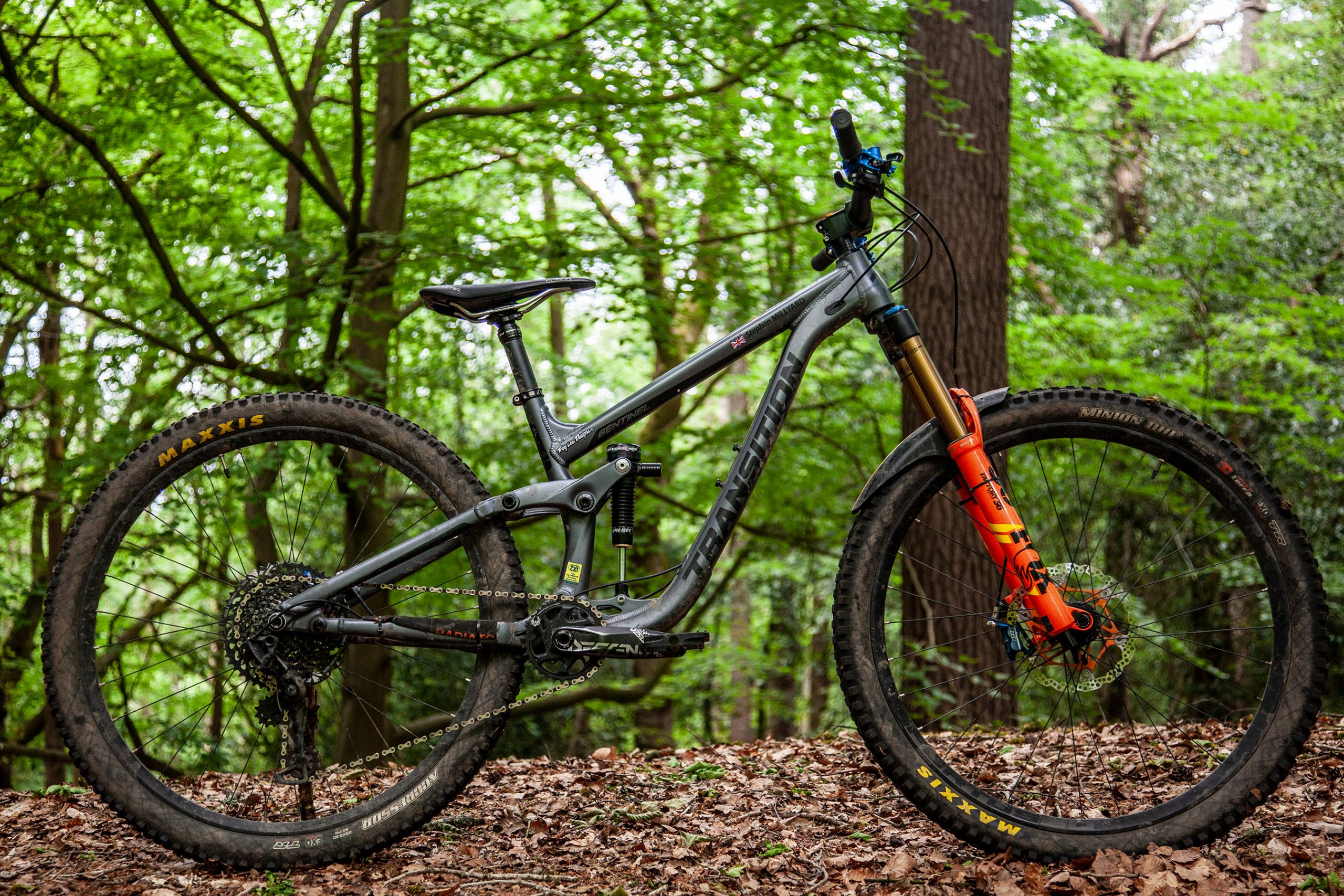The unicorn shock from shed-inventor supreme, Allen Millyard, surfaces once again. But you still can't buy it.
If you’re at the nerdiest peripheries of mountain biking, you’ll be familiar with the name Millyard; creator of trellis-framed, single-sided-swingarm downhill bikes and intriguing high-tech shocks.
>>> How to set up mountain bike suspension
If you’re not, well to paraphrase, Allen Millyard and his son Stephen are living examples of Britain’s predisposition to brilliant boffins and engineers, tinkering away in sheds and garages across the country. They build motorcyles with V12 engines and bicycles with enclosed drivetrains, and defy conventions along the way.
For further proof, check out one of their wild creations – a downhill bike once raced by Bernard Kerr…
Recently they have been working on a shock, using technology from the military and aircraft industries. A few years ago this surfaced as the Brew Nitro Shox, designed by Joe Hunter, but it never really got off the ground, metaphorically and literally.
Now the Millyards are back with a new design, though we’re fairly sure it’s based on similar principles. The new Hyper Ride II is, according to the press release – a unique thing of wonder in itself (read it in full below) – “a shock like nothing we’ve made before”. Built from bits and bobs lying around the shed (we’d guess the Millyard shed is nothing like most people’s), it uses a phosphor bronze bush forged from a 1950s BSA Gold Star valve guide, which serves as the lower pivot. The strut is a reengineered Land Rover steering damper, and the shock body was turned from a block of aluminium left over from the 2006 Millyard DH race bike.
The finished result is very much less Heath Robinson than it sounds, and looks very much at home on Stephen Millyard’s Transition Sentinel test bike – even though you’d be forgiven for thinking it’s missing a coil spring. In fact, what you see is what you get. This unibody construction houses both the spring and the damper. Yet, according to Millyard, there are no shims, valves, washers or adjusters inside – just oil and gas (likely nitrogen) at very high pressure judging by the warning sticker on the valve.
With the Hyper Ride II, it’s definitely a case of one question leading to ten more questions, and as we’ve learned to expect over the years, there are no direct answers. However, time has shed light on what’s (possibly) inside the quirky damper. It runs on technology used by aircraft landing gear and tank suspension. Called Oleo, this gas-trut technology can be traced back to the 1920s and uses a floating piston to separate the nitrogen and the oil. As you hit a bump, the oil pushes against the floating piston and compresses the nitrogen, which acts as the spring. The oil flows through an orifice as it’s displaced, and a tapered pin passes through that same hole, changing the amount of fluid that can move between chambers and pressurise the IFP and spring. Thus the spring and damping rates vary depending on the position of the piston.
And with no external adjustments, the only thing that really can be tuned without changing parts is the pressure of the Nitrogen – no twiddling with dials.
It’s certainly a unique proposition in the mountain bike market, even if it’s in widespread use across other applications. We’ve been offered a chance to ride it, and hopefully we’ll be able to take up that offer soon. Watch this space. Oh, and don’t bother about trying to get yourself on a waiting list for one – apparently it’s just a bit of fun and there are no plans to put the Hyper Ride II into production.
That press release in full:
With the second generation of Hyper Ride comes a shock like nothing we’ve made before. One week, one vision, no drawings, just an idea…
Inspired to create something completely original, we wanted to make a new shock that is simple yet refined, using British materials where possible. The project began in the garden shed where we were able to find old vehicle parts, that would later form the key components of Hyper Ride 2. A phosphor bronze bush forged from a 1950s BSA Gold Star valve guide serves as the bottom pivot, in addition to the main strut, a reengineered Land Rover steering damper! Hand machined using a 1974 Colchester Lathe, the main body was turned from a solid block of aluminium (left over from the 2006 Mk1 Millyard downhill race bike!) and finished on a 1950 Elliot milling machine. The most striking new feature is the unibody construction which facilitates central filling ports for both gas and oil, along with cooling fins to maintain a consistent oil viscosity and gas pressure. There are no washers, shims, valves or adjustments needed for this design. No need to tune, just ride. Initial tests of this prototype are looking positive and we can’t wait to hit some bigger trails.
Welcome to Hyper Ride.







